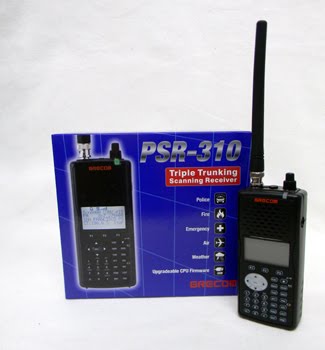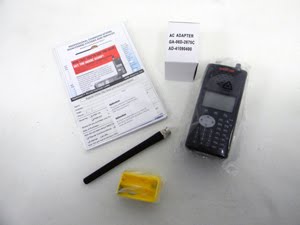Earlier we discussed the differences between Type 1 & 2 and Phase 1 & 2 trunking systems. This week we will discuss some other formats of trunking. I choose to use the easier to understand mnemonics of 1 and 2 rather than the more correct I and II for some of these systems. These mnemonics are often interchanged.
“Motorola” trunking systems include Type 1, Type 2 and Type 2i systems. The original Type 1 systems used a 3600 baud control data signal and a Fleets/Subfleet programming style. In time it was found to be too limiting, it restricted the number of subfleets and radios that could be accommodated within the Fleets. Motorola developed what was called Type 2 trunking that used a similar 3600 baud control data signal but removed the restrictions about Fleets and Subflleets and removed many of the limits on radios. Type 2 systems could have more than 65,000 individual radio ID’s and thousands of Talkgroups.
Some Type 1 systems were upgraded, either to Type 2 or to a hybrid system that allowed both Type 1 and Type 2 radios, this was commonly referred to as Type 2i. A later version of Type 2 trunking, called APCO P16, used the same Type 2 control data but allowed either analog or digital modulation.
APCO P25, as we discussed last week, is an all-digital format sold by several manufacturers, including Motorola, Harris and others. The format was developed by and for APCO and is licensed from them. The system was designed to be interoperable between the several vendors but often they add features that only they can provide so as to rope in customers to continue buying their radios instead of radios from other companies. One way to tell a Motorola designed system apart is by the control channels. On Motorola systems the Control Channel rarely changes and there are only 2 to 4 channels that they would rotate to if one becomes unavailable. Harris designed systems can use any of the channels for control data and some of these rotate the control data regularly.
P25 voice is also commonly used on conventional (non-trunked) channels as well.
There are two main types of P-25; Phase 1 and Phase 2 (or Phase I and II). Phase 1 allows a single conversation on a voice channel while Phase 2, a form of TDMA, allows 2 on each channel, effectively doubling the capacity of the system.
Most scanners these days only require the current Control Data channel for many of the P25 and Motorola trunking systems to track them.
EDACS is a trunking system originally sold by General Electric as a competitor with Motorola Type 1 and later Type 2 systems. This comes in 2 different types, the 9600 Baud control data commonly used on 800 MHz. systems and 4800 baud control data mostly used on UHF and 900 MHz. EDACS systems can use either analog voice or digital voice, called ProVoice. While any trunking scanner can handle analog EDACS systems only certain Uniden scanners (BCD325P2, BCD996P2, BCD436HP and BCD536HP) scanners can monitor ProVoice operations and these require the ProVoice paid upgrade.
EDACS is commonly used for public safety and less often in business applications. It shares many features with the Motorola trunking formats but is not compatible with it. It can be used as Single Site, Simulcast or Networked or some combination of these.
After several years GE sold the EDACS product line and it bounced around to several companies before landing at Harris Communications. Since EDACS is no longer sold or supported by Harris many of the systems have been shut down or converted to other formats. At some point EDACS systems will all be shut down as parts become unavailable for repairs.
To program an EDACS system into a scanner one needs to put the channels in their proper assigned slots. This is called the “LCN” (Logical Channel Number). This is because the radio only sends the channel number, it is up to the scanner or other radio to match this with the actual frequency.
LTR (Logic Trunked Radio) is a popular format for business users and occasionally used for public safety. This format does not use a dedicated control channel like Motorola, EDACS or P25 systems do. Instead data is sent piggybacked onto the regular traffic on the channel advising specific radios to go to a channel for a message. While this allows all channels to be used for voice messages it is not as robust as other systems so is not often used for police and fire use.
One can tell is an LTR system is in us, there is a characteristic repeater key-up on most channels. This is sending data to radios assigned to that channel as it’s “Home Channel”. Most trunking scanners can handle LTR systems, the trick is determining the LCN slots properly.
DMR/TRBO/NXDN systems can be either conventional or trunked. Some systems can be trunked with a single channel, using sub-audible codes to separate the groups. These systems use TDMA for voice traffic so multiple conversations can be carried on one channel.
While used mostly for business activities these systems occasionally are used for public safety, especially in the SE states.
MotoTRBO is a brand name used by Motorola for it’s DRM offering. While there are slight differences a DMR scanner works fine for unencrypted TRBO systems.
DMR is available on certain Uniden and Whistler scanners.
NXDN trunking is very similar to DMR but just different enough to require a different mode. As of this writing (Spring 2017) NXDN was only available on the TRX-1 and TRX-2 scanners by Whistler.

 By Jonathan Higgins
By Jonathan Higgins

